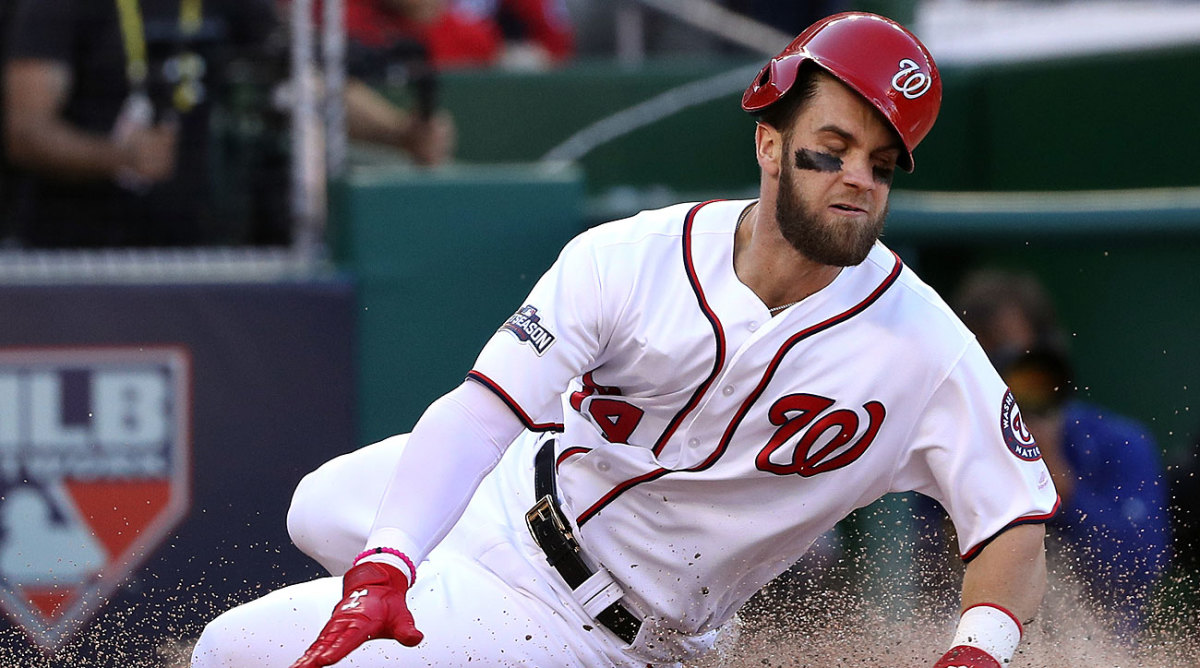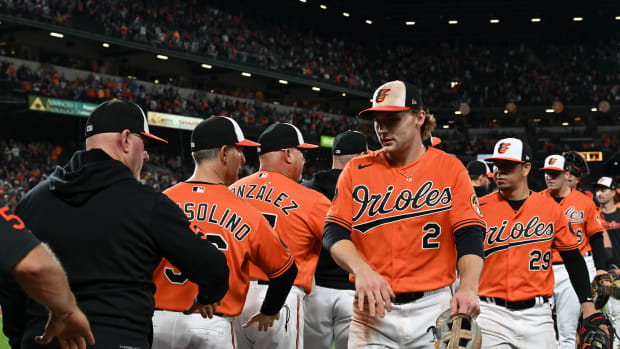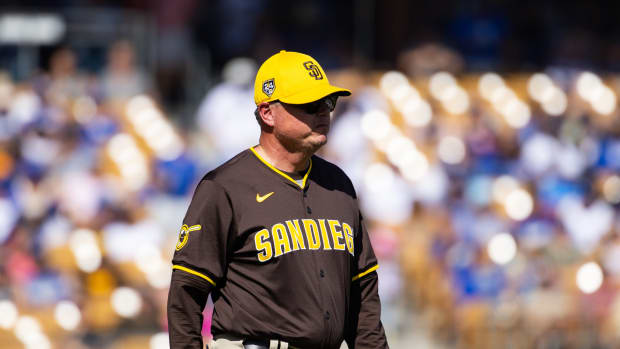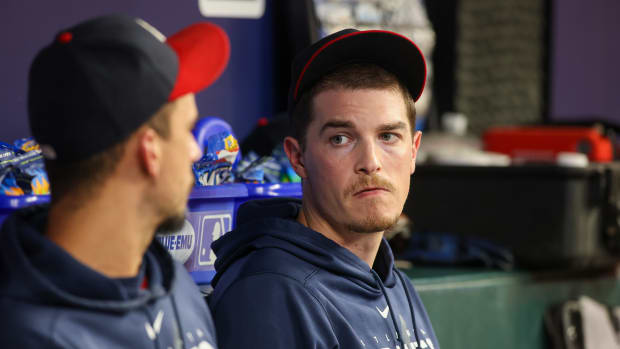5. Which of these stars will have the biggest bounceback season?
Presented in alphabetical order:
Bryce Harper, Nationals
Entering a series in Milwaukee from June 24 to 26, Harper was having the kind of season (.884 OPS) that resembled his career norm (.883). Then he hurt his upper right shoulder, near the neck area, diving headfirst into a base. His OPS after that series dropped to .760, and he hit just .238, playing an extremely shallow rightfield to compensate for diminished arm strength. Harper missed only 12 games playing through Washington’s final 86 games, and he never acknowledged being physically compromised.
Harper’s biggest flaw was that he could not hit velocity at the belt and above, and opposing teams kept pounding at that weakness. Harper hit .178 on four-seam fastballs at the belt and above. The previous year he hit .371 off those same pitches. Something was clearly wrong.
Jason Heyward, Cubs
I can’t say I was surprised that Heyward hit .230/.306/.325 after signing a $184 million contract with Chicago before last season. At the 2015 winter meetings, when Heyward was on the free-agent market, I polled managers and executives about Heyward. It was alarming how many of them told me that thee was a chance he simply would not hit well because of his poor swing mechanics. That’s exactly what happened. His awkward re-gripping of the bat—which takes away the looseness of his wrists—the slow path to the ball, the locked front side, the spinning off his front heel ... his swing prevents him from getting to any velocity middle in.
The Cubs decided to leave Heyward alone in spring training last year rather than overhaul the swing of somebody new to the team. All bets are off now. Hitting coach John Mallee is working with Heyward this winter to keep his hands lower, ditch the re-gripping and create a shorter path to the ball. Heyward is only 27 years old. He was so bad last season that it shouldn’t be hard to improve.
Andrew McCutchen, Pirates
It’s hard to recall a great player who fell so far so fast without a significant injury. (McCutchen did play through a mid-season thumb injury, but that was well after he was deep into his down year.) The most stunning part was not that McCutchen hit like someone who hadn't finished in the top five in the NL MVP voting four years running—off years happen—but that his defense and base running were abysmal. The Pirates’ experiment to have McCutchen play a shallower centerfield was a disaster. And I don’t know how you explain his lack of aggressiveness on the bases. From 2009 to '14, McCutchen advanced from first to third on 31% of singles. Over the past two years, that percentage dropped to 14%—below the first-to-third rate of Cardinals catcher Yadier Molina (16%).
It’s possible that either McCutchen, 30, is aging quickly, or that he simply had 3 1/2 bad months and already is on the way back. After all, after the middle of August, McCutchen’s numbers (.297/.368/.492) were back to tracking along his career numbers (.292/.381/.487). This year he’ll have one more battle on his hands: playing with trade rumors hanging over his head all season.
Yasiel Puig, Dodgers
This is a bit of a trick choice: Puig never has put up star numbers over a full season and is more likely to continue along his same career path, which is not bad. The mythology of Puig derives from his first month in the big leagues, when opponents had no information about how to pitch to him. Puig hit .407 in his first 34 games. He is a .276 hitter since. Last year he found himself on the trading block and in the minors, a demotion from which he recovered nicely after his promotion, batting .281 with a .900 OPS in the final month of the season.
Puig is 26 and has 1,751 career plate appearances under his belt. He’s still learning, though, about how to play baseball and how to take a professional approach over the six-month grind of the season. There’s been very little growth in his game so far, so he’s more likely to remain the same kind of player than he is to have a breakout season.



































